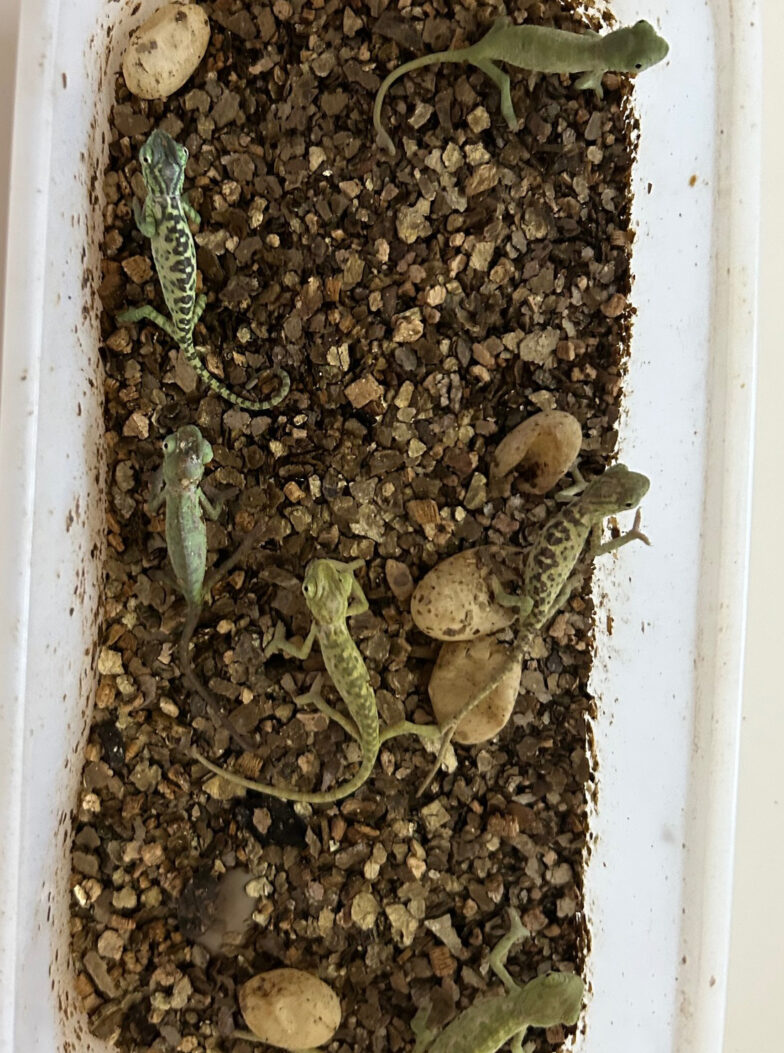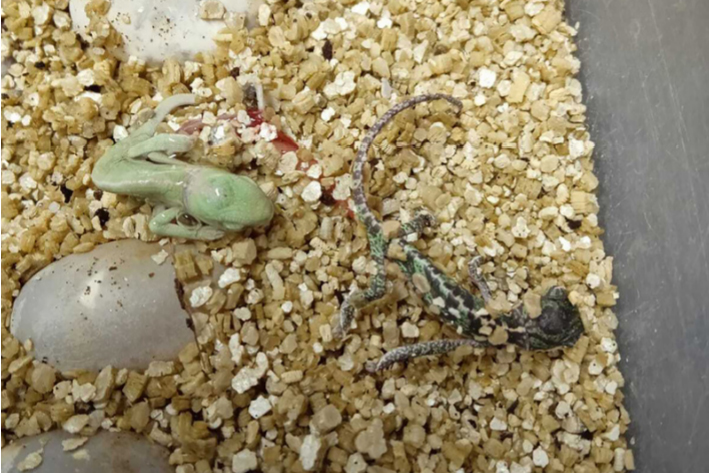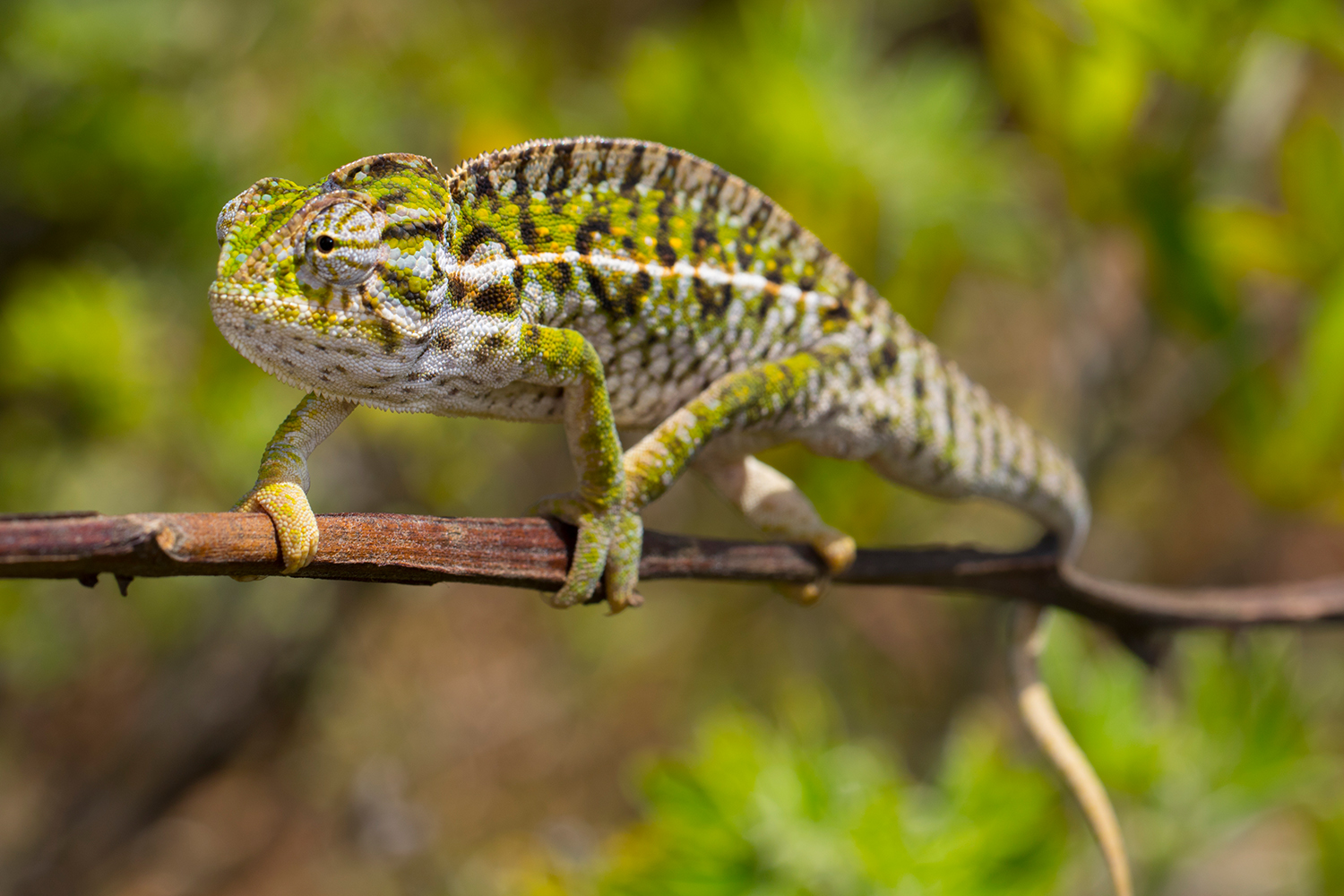The Arabian chameleon, Chamaeleo arabicus, is hardly ever bred in Europe at the moment. So it is all the more pleasing that this week a whole clutch of chameleons hatched successfully in Switzerland and Germany! Congratulations to Franziska von Ballmoos-Gasser, where the pictured hatchlings live. Franziska had given the parents to Rolf Attinger in winter 2021, where they successfully mated in 2022. After Rolf died unexpectedly, Franziska took back the animals and several eggs. Some of the eggs were given to a good friend of Rolf in Germany, the rest remained in Switzerland. Now 9 agile, good-looking youngsters have hatched in Switzerland and 14 in Germany. The aim is to join Rolf’s success with the species and to continue breeding the species with the same joy. At some point in the future, legal offspring of Chamaeleo arabicus should be offered in Europe. We sincerely hope that everything will continue to work out and that many more keepers will be able to enjoy the species!
Twins in Veiled Chameleons in Latvia
Short messages NachzuchtenThe hatching of two pairs of twins of Veiled Chameleons (Chamaeleo calyptratus) in Latvia has been reported from Riga. The parents live at Riga Zoo and the young hatched in March 2022. The twins were two male and two female Veiled Chameleons, each pair in one egg. They came from a clutch of 85 eggs, of which 48 eventually hatched. All four young animals were active at first and accepted food. At the age of two months, one of the juveniles died, the remaining three were still alive in February 2023.
The article also gives a brief overview of cases of twins in reptiles from the existing literature.
A review of twinning in lizards and a report of Veiled Chameleon (Chamaeleo calyptratus) twin births
Alessandro di Marzio, Elza Birbele, Lucia Puchades, Andris Lazdiņš
Herpetology Notes 16: 471-476, 2023
DOI:
Photo: One of the twin pairs at hatching
Influence of UV-B on growth
Short messages ScienceAn interesting husbandry experience from the USA was presented in a short note in the Herpetological Review. Twelve carpet chameleon hatchlings (Furcifer lateralis) from the same clutch were divided into four groups of three animals each. During the first ten weeks after hatching, two groups were provided with a daily UV index of up to 3 for 12 h, the other two groups with a UV index of up to 7. Reptisun 5.0 was used to achieve the different UV indices. Measurements were taken with the Solarmeter 6.5. The chameleons were allowed to avoid UVI up to 0. After six, eight and ten weeks, the carpet chameleons were measured and weighed. It was noticed that in weeks 6 and 10, the groups with the lower UV index were up to 25% heavier than the comparison groups.
The two authors conclude that higher UV indices during rearing in the first weeks could lead to slower growth rates in carpet chameleons. This would correspond to the observation in nature that young animals “sunbathe” rather rarely and stay more hidden in the bushes. Due to the small group of test subjects and mixed groups instead of individual keeping, you must still be cautious with conclusions here. In addition, it is unfortunately still largely unexplored whether and how chameleons can regulate their vitamin D3 regulation in artificial light compared to natural sunlight. Nevertheless, it is a very interesting approach that is certainly worth pursuing.
Furcifer lateralis (carpet chameleon): Impact of Ultraviolet Light on growth
Michael J. Nash, Christopher V. Anderson
Herpetological Review 52 (2), 2022




